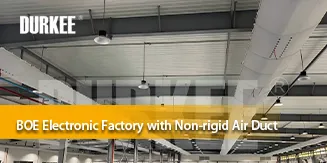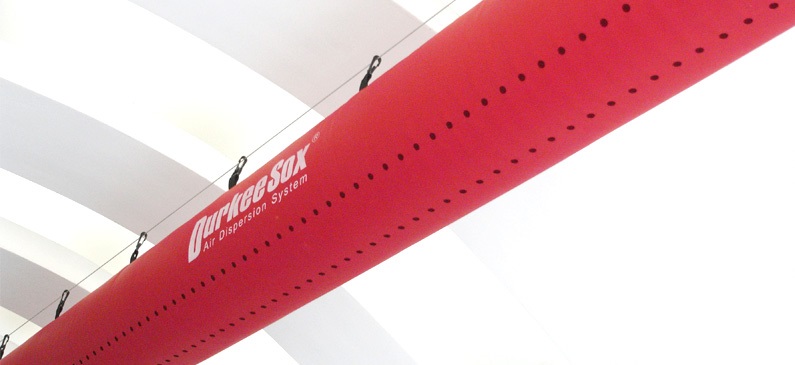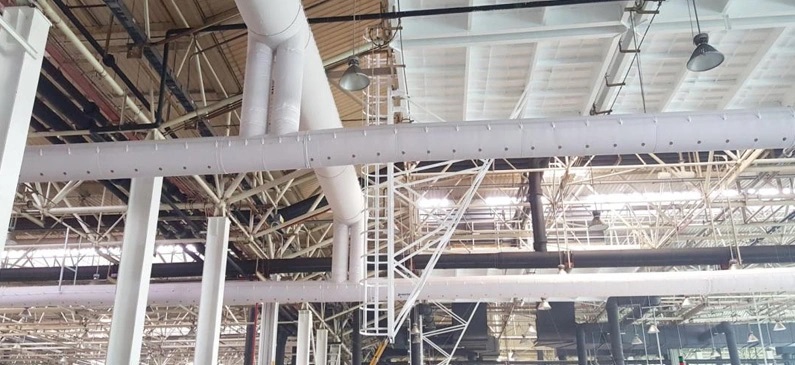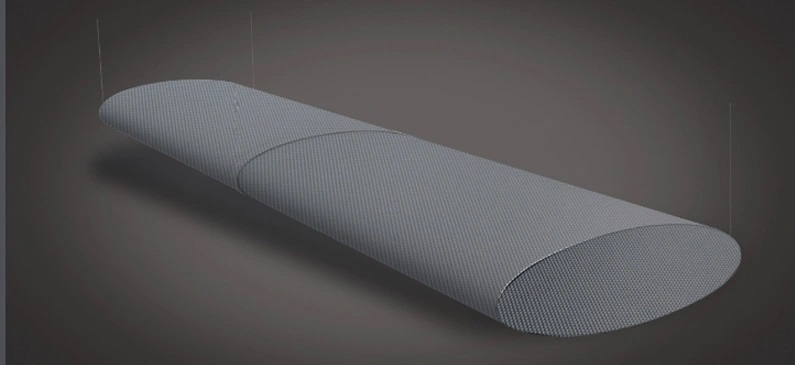 BOE Vietnam Factory: Non-rigid Air Duct Solutions for Electronic Industry
BOE Vietnam Factory: Non-rigid Air Duct Solutions for Electronic Industry
 Why Fabric Air Ducts Are the Preferred Choice for Ventilation in Large Spaces
Why Fabric Air Ducts Are the Preferred Choice for Ventilation in Large Spaces
 The Difference Between Non-Rigid Air Ducts and Rigid Ductwork
The Difference Between Non-Rigid Air Ducts and Rigid Ductwork
In modern building HVAC systems, ducts serve as the critical channels for air distribution, and their performance and cost-effectiveness directly influence both operational efficiency and long-term return on investment. Among the available options, the Fabric Air Duct has emerged as a forward-looking solution. With its unique advantages, this innovative system is gaining increasing attention and becoming a preferred choice in air distribution design. This article explores the "cost code" of fabric ducts, analyzing their value across the entire lifecycle—from initial investment to installation, transportation, maintenance, and long-term operation. By uncovering these dimensions, we reveal how fabric ducts provide superior cost-performance compared to traditional alternatives.
At first glance, decision-makers often compare ducting systems by their upfront purchase price. Rigid ductwork might sometimes appear less costly in material terms, but such a comparison does not reveal the full financial picture. A Fabric Air Duct system, such as those produced by leading fabric duct manufacturers like Durkeesox, delivers far more than material savings. The lightweight design, combined with flexible customization, reduces the need for additional fittings and components, which lowers the true initial investment when considered alongside related installation and labor expenses. Rather than focusing only on unit price, Durkeesox fabric duct should be evaluated as part of a complete cost structure.

One of the most significant advantages of fabric duct systems lies in their simplicity of installation. Traditional rigid ducts are heavy, difficult to maneuver, and demand extensive labor, equipment, and time. By contrast, a Fabric Air Duct weighs only a fraction of its rigid counterpart, which translates into faster installation, reduced manpower, and lower project overhead. Transportation also contributes to the hidden savings: fabric ducts can be compactly packed and shipped, significantly lowering logistics costs compared to bulky metal ducting. Maintenance further amplifies these benefits. Instead of complex cleaning procedures, fabric ducts can be easily removed, washed, and reinstalled, saving both time and operating expenses. This combination of factors forms a hidden treasure of cost savings often overlooked when comparing duct systems.

The real strength of fabric ducts becomes most apparent over years of operation. Air distribution efficiency directly impacts both energy consumption and indoor comfort. Rigid ducts are more prone to leakage, uneven distribution, and energy loss, while fabric ducts are engineered for uniform airflow and minimal leakage. This precision reduces hot and cold spots within a building, improving energy efficiency and lowering utility bills. Over time, these operational savings far outweigh the differences in initial cost, accelerating the recovery of investment. In fact, the contribution of fabric ducts to a low-carbon, energy-conscious building environment aligns seamlessly with today’s demand for sustainable solutions, making them not just a cost-effective but also a forward-thinking choice.

Beyond direct financial savings, choosing fabric ducts also represents a strategic step toward future-proofing building design. In the global HVAC market, where sustainability and efficiency drive innovation, manufacturers like Durkeesox have established themselves as leaders. Through its brand Durkeesox, the company has combined technical expertise with advanced manufacturing to offer Fabric Air Duct solutions that meet international quality certifications and performance standards. By reducing installation complexity, lowering long-term energy costs, and simplifying maintenance, fabric ducts create an enduring value stream across the full lifecycle of a ventilation system. For building owners, this translates into improved return on investment and alignment with modern expectations of green building performance.

The "cost code" of fabric air ducts lies in seeing beyond the surface of initial purchase prices. Their lightweight structure, easy installation, compact transportation, and effortless maintenance reveal hidden cost savings, while their superior energy efficiency ensures long-term economic benefits. As leading fabric duct manufacturers, Durkeesox demonstrates how fabric air ducts unlock lasting value and represent a smarter investment in lifecycle cost performance. In today's pursuit of efficiency, sustainability, and long-term optimization, fabric ducts stand out as a forward-looking choice. By decoding this cost advantage, building operators can achieve not only immediate savings but also long-term operational excellence.